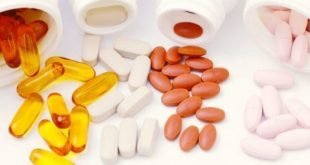 Also the doctors talked about the hidden dangers that pose a low-carb diet.
Also the doctors talked about the hidden dangers that pose a low-carb diet.
In our age of growing fashion for healthy eating and low-carb diets the good old carbs losing popularity much faster than vecherkovskiy them from the diet of passionate fighters with their weight their weight. However, as usual, not so simple and obvious: carbohydrates, of course, you should eat, but why and how — will tell the experts.
For some reason people decided to declare war on carbohydrates. We are afraid of universal “ballomania”, so let’s look at what carbohydrates are and shall discuss the principles of proper nutrition.
What is it?
From the point of view of the chemistry of carbohydrates — a class of organic substances, containing carbon, oxygen and hydrogen. In the body there are only about 2-3%, which are deposited in the form of glycogen (roughly speaking, the operational energy). 5-6% of the total weight of the liver, up to 0.5% of the heart and 2-3% of skeletal muscle is carbohydrates.
In the body of a 70 kg male approximately 500 g of glycogen, but besides him there are glucose, which freely floats in the blood. It is quite small — about 5 grams. The more people trained, the more glycogen it can store.
The human body can synthesize carbohydrates, but in small quantities, so the quantity of carbohydrates enters the body with food. The carbohydrates are mostly in foods of plant origin. For example, in the cereals they contain about 80% of the total dry weight. For example sugar is actually to 99.98% carbohydrate.
What are they for?
Carbohydrates have their own problems:
Energy: carbohydrates provide 50-60% of daily energy in the body. The oxidation of 1 g of carbohydrates is excreted 17 kJ of energy, or more familiar to us 4.1 kcal and 0.4 g water.
So when you stop eating carbs, you first, “merges”, i.e. of you out previously stored water. This process a is mistaken for true fat loss, while only depleted of glycogen.
The main source of energy for us — it is stored in liver and muscles of glycogen and free glucose in the blood, which formed from eaten carbohydrates.
Plastic or construction: from carbohydrates to “build” some enzymes, cell membranes, they are also part of the complex polysaccharides and proteins of the cartilage, bone and other tissues.
Carbohydrates are stored as reserves of nutrients and are part of complex molecules (e.g., ribose and desoxiribose) participate in building a universal energy source ATP, the “repository” of genetic information, DNA and macromolecules contained in the cell — RNA.
Specific: carbohydrates for example, act as anticoagulants, that is, make the blood clot at the wrong time.
Are receptors a number of hormones or pharmacological substances – that is, helps the hormone to recognize where and in what quantity they are needed. They also have antitumor activity.
Supply of nutrients: carbohydrates accumulate in skeletal muscle, liver, heart and some other tissues in the form of glycogen.
Glycogen is the energy reserve bystrooborachivaemy. The function of liver glycogen is to provide glucose for the entire body, the function of muscle glycogen is to provide energy for physical activity.
Protective: complex carbohydrates part of the immune system components. Mucopolysaccharides are found in the mucous substances that coat the surface vessels of the nose, bronchi, digestive tract, urinary tract and protect against the penetration of bacteria and viruses, as well as from mechanical damage.
Regulatory: food fiber can not be digestion in the intestine, however, activates peristalsis of the intestinal tract, the enzymes used in the digestive tract, improving digestion and nutrient absorption.
What are they?
Bread, cereals, pasta, vegetables, fruits, sugar — are all products of vegetable origin consist mainly of carbohydrates or mono-, di – and polysaccharides.
Monosaccharides: these are simple carbohydrates that do not disintegrate under the influence of digestive enzymes. Glucose and fructose is a monosaccharide which is found in many fruits, juices, honey, and are called sugars. In the body they act like themselves, if you ate a spoonful of sugar, or formed in the process of digestion of more complex carbohydrates.
Once in the body is a lot of free glucose, aktiviziruyutsya pancreas, which secretes the hormone insulin, whereby glucose is redirected to the tissues where it is used for glycogen synthesis, and with a significant excess for fat synthesis (here it is the effect of excess cakes and abuse of fruit juices!)
To the monosaccharides were our friends, not enemies, their quantity in the diet should not exceed 25-35% of the total amount eaten per day of carbohydrates.
Roughly speaking, for every 2 teaspoons of sugar (monosaccharides or simple carbohydrates) should be consumed 100 grams of oatmeal (complex carbohydrates).
Now very fashionable to replace glucose in fructose under the auspices of what is allegedly more useful and it is not stored as fat. This is not true: glucose and fructose — siblings. They differ only that glucose contains aldehyde functional group and fructose is a keto team.
Disaccharides: it is an integral part of the oligosaccharides, which is composed of 2-10 monosaccharides. The main disaccharides is sucrose (ordinary table sugar), consisting of residues of glucose and fructose, maltose (malt extracts cereal, sprouted grain) or two linked glucose residue, lactose (milk sugar) having in its composition a balance of glucose and galactose. All disaccharides have a sweet taste.
Polysaccharides: are complex carbohydrates composed of many hundreds or thousands of linked monosaccharides. This type of carbohydrate found in starch (potatoes, cereals, bread, rice, etc.), the “animal starch”, glycogen, dietary fiber and pectin (fruits, vegetables, cereals, legumes, bran, etc.) and easily digestible inulin (Jerusalem artichoke, chicory root, onions, garlic, bananas, barley, rye).
How many carbs?
It is recommended to eat 4 grams of carbohydrates per kg of body weight. That is, for a girl weighing 60 kg you need to eat 240 grams of carbohydrates. It is approximately 360 g boiled round rice or 1.5 kg of boiled potatoes, or 2.6 kg of sweet apples, or 12 kilograms of celery.
4 g for every kg of body weight is the recommendation for sedentary people. For slightly, moderately active – rule 5-6g, for a moderately active (e.g., 3 strength workouts a week for an hour) — 6-7, Athletes also recommend eating at least 8-10 grams of carbohydrates for every kg of their muscular bodies.
What if without them? Risks of protein (carbohydrate-free) diets
Yes, people — protein form of life that can exist without the use of carbohydrates in food, but it’s unhealthy, illiterate and in the future will cause harm. Because the reduction of carbohydrates in the diet enhances the disintegration of the cell proteins, oxidation of fats and formation of ketone bodies, which can lead to acidosis, that is, increase acidity in the body.
Usually the products of oxidation of organic acids are quickly removed from the body, but fasting or a low carbohydrate diet, they linger in the body, which in best case will result in the urine acetoacetic acid and acetone, and in severe can lead to coma (this happens to diabetics).
“Dukanova” sometimes metabolic acidosis — with a lack of carbohydrates in the tissues accumulate acidic foods, so there is keto – or lactic acidosis.
Ketoacidosis occurs due to a lack of insulin. When you eat carbohydrates critically low (less than 2 g per kg body weight) for quite a long time, the body feeds itself with energy through glycogen and stored fat. The brain gets energy mainly utilizing glucose and acetone is a toxic substance.
Direct the breakdown of fats could not provide the necessary energy for the brain, as well as the glycogen stores are relatively small (500 g) and depleted during the first days after the failure of carbohydrates, the body can provide the brain energy either by gluconeogenesis (synthesis of glucose), either by increasing the concentration of ketone bodies in the blood to switch to other tissues and organs to alternative source of energy.
Normally, when a deficit of carbohydrate food the liver from acetyl-COA synthesizes ketone bodies — ketosis occurs, which does not cause electrolyte imbalance (which is normal). However, in some uncompromising cases of possible decompensation and the development of acidosis and can lead to diabetic coma ketoatsidoticheskaya.
Fats with low-carb diets burned worse than if a normal, balanced diet, as fats are usually connected with carbohydrates for later conversion into energy, and the shortage of carbohydrates is inferior fat burning, and produces a byproduct — ketones, which accumulate in the blood and urine causing ketosis.
Ketosis leads to a decrease in appetite (the body thinks he’s on the verge of survival), decreased performance, lethargy, fatigue and irritability become the norm.
Too much carbs
Systematic too many carbohydrates leads to a predominance of fermentation processes in the intestine, as well as obesity, atherosclerosis, diabetes type II diabetes, as part of the carbohydrate is converted into fat and cholesterol, which lie dormant on the internal organs, on top of our beautiful muscles and otherwise harm the circulatory system.
In order to be healthy really need to be able to meet the needs of the body so that was good all over the body as a whole, while staying within the normal healthy limits. It is important that all the sense organs (including your brain) happy eating out to eating deliver positive emotions.
© 2017 – 2019, paradox. All rights reserved.





